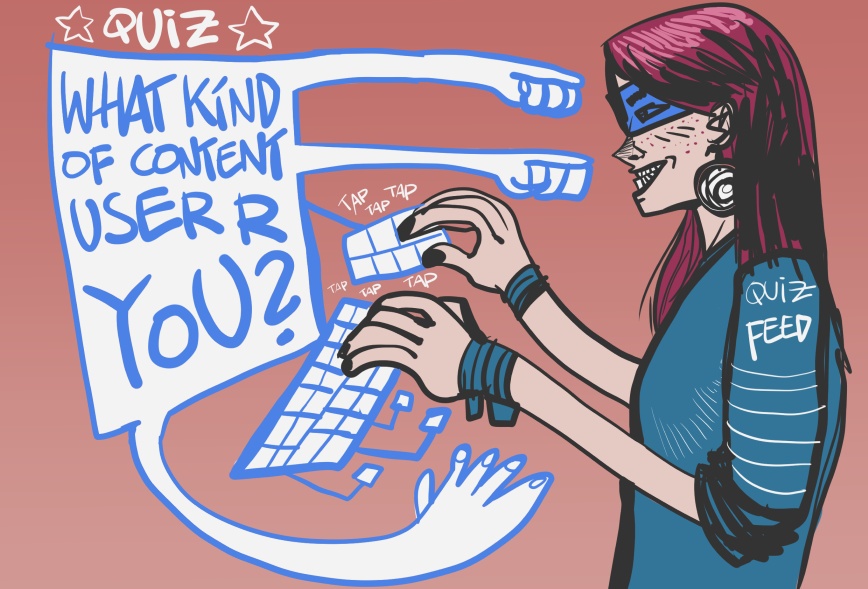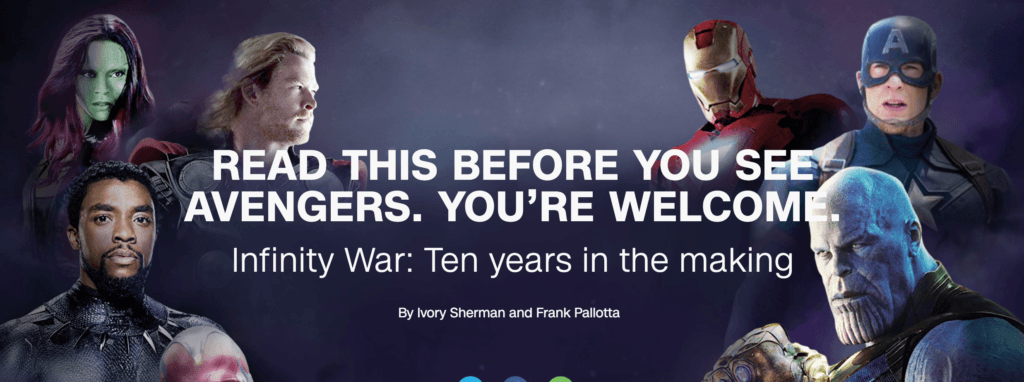It’s been a while since I (Brad), the owner of this blog, sat down to churn out a new post.While I didn’t expect that to be the case, I have…
Become A Full-Time Writer
It’s been a while since I (Brad), the owner of this blog, sat down to churn out a new post.While I didn’t expect that to be the case, I have…
https://wordtothewise.com/2020/05/lets-talk-engagement/
I’m working on a more formal schedule for the Let’s Talk events and hope to have that out over the next few days. Meanwhile, we’re moving ahead with the next talk: Engagement!
Wednesday June 3, 5pm Dublin, noon Eastern, 9am Pacific. Send an email to laura-ddiscuss@ the obvious.
Notes, questions and comments for past talks are available.
I want to take a minute to thank everyone who has joined the calls. I get to see old colleagues and meet new ones. They’ve been great because you’ve all shown up and participated. I look forward to hosting many more.
https://www.rohitbhargava.com/2020/05/isolation-loneliness-advice-remote-work.html
Last week I attended a virtual book launch event hosted by a DC-based networking group called Cadre where former Surgeon General Vivek Murthy spoke about his new book Togetherness. The book explores how loneliness is an underappreciated public health epidemic – a particularly relevant topic today at a time when many people have been forced into working isolation and offices have been closed.
It is natural to crave human connection, and people new to working remotely often cite the isolation and loneliness as their biggest struggle. As I explored the topic over the last several months as part of the research for my own newly released book, the first thing I realized is that isolation and loneliness are usually two different problems.
Isolation is a feeling of disconnection that can come from processes or a workplace culture that removes them from colleagues or information.
Loneliness, on the other hand, is an emotional state and can happen with those working remotely as well as those who go to an office and are surrounded by people.
Working without colleagues around can be lonely, and the sense of isolation can lead to depression or a feeling of disconnection from everyone else. Even if you have virtual meetings regularly or visit the office on occasion to meet with people, this is one of the most common and natural emotions you may feel.
The good news is, from my research and many interviews with smart people who have been working remotely successfully for years, I discovered there are some smart ways that you can address both issues, be more productive, keep your sanity, and connect with others while working remotely. Here are the biggest lessons I learned:
Back when I was working in an office in D.C., I used to get interoffice emails about colleagues’ birthday parties. Then I started working remotely in the same job and one day they stopped. Modern workplaces are full of moments like this when remote workers are unintentionally cut off from the team, but we can prevent that if we can understand when they happen. Back then I never mentioned to anyone how it made me feel to be taken off the list, and no one ever asked. Looking back now, I use the example as a reminder for myself and leaders whom I advise that sometimes you have to ask about these small things in order to identify them … and then you can do something to fix them.
Contrary to what some people think, spending too much time on social media seeing how connected everyone else seems is a recipe for making yourself lonelier. Instead, reach out to reconnect with people individually. The individual part of this, is key. One on one time is valuable in real life, but it can be valuable virtually too. You might be surprised how many friends who appear to have amazingly complete lives on social media are just as hungry for a real connection as you are.
Could you find a volunteer group where your time might be valued? What about sharing your expertise online with people who could benefit from it? There are many places, causes, and people who could use your help right now. When you focus on what you can give instead of what you miss, you can change your perspective. Not only can this be of great value for your community, but also you can feel positive yourself and make some connections in the process.
Anytime I started to feel disconnected from colleagues, I realized it was at least partially self-inflicted. I was too busy to go to the events I had been invited to. I would retreat into my home-based cocoon. Don’t make the same mistake. When you are invited to participate, make it happen. And seek out those events or interesting gatherings happening (virtually now, and real life later) where you can be part of something bigger.
Many modern companies are using programs such as reverse mentors to ensure everyone feels connected – even those working remotely. If your company has a program like that, join it. If not, try to find a similar group in your area that runs this type of program. Similar to the benefit of having one on one time with someone, this type of learning-based relationship can really help you feel socially connected, whether you’re the one doing the mentoring or you’re the one being mentored.
Any number of self-help books will tell you that the path to happiness lies in focusing on experiences instead of accumulating more stuff. Think about how you might spend money on an experience that can allow you to feel more connected with other people and challenge yourself to do something new and unusual, whether it is jumping out of a plane or trying a new cuisine via takeout.
These insights are excerpted from my latest book, The Non-Obvious Guide to Virtual Meetings & Remote Work that is now available. You can pick up a full copy of the book by visiting your favorite bookstore online or buying directly from Bookshop.org.
https://conversionsciences.com/mobile-ecommerce-checkout-maximizing-conversions/
Having trouble viewing the text? You can always read the original article here: Mobile Ecommerce Checkout: Maximizing Conversions
Concerned with your mobile ecommerce checkout conversion rates? Discover how to maximize these seemingly fickle mobile visitors. There are approximately 50 million mobile-only users in the US alone. That’s roughly one in five American adults who are “smartphone-only” internet users. If all they have is a smartphone that’s what they will use to shop from […]
The post Mobile Ecommerce Checkout: Maximizing Conversions appeared first on Conversion Sciences.
https://econsultancy.com/key-email-website-ecommerce-retail-personalisation-strategy-post-pandemic/
As Covid-19 measures are slowly being lifted, marketers need to make sure they can emerge from lockdown and regain ground as quickly as possible. Whilst there is still a lot of clarity required around what the eased safety measures will mean for businesses and all areas of daily life, for retail marketing teams the preparation work for trading in the new normal must start now.
Marketing in the post-pandemic world doesn’t mean simply reverting back to the plans and activities that were in place before the crisis. As we all know, a lot has changed in a short space of time and will influence consumer behaviour on the other side. The tactics that were effective in early March may not be so powerful now, so understanding how shopping patterns and business requirements have changed is going to be more important than ever. Whilst in-store retail has been shut, and may remain impacted in coming months, many online sectors have seen a dramatic increase and represent a huge opportunity.
With potentially the biggest recession for 300 years on the horizon, retail brands need to look to the marketing tactics that will deliver maximum value across the channels they own – email and the website. Post-pandemic, purse strings are likely to be tighter and competition even more fierce, so getting the basics right will matter more than ever: Demonstrating a deep understanding of an individual and making their life easier.
Let’s look at three key marketing tactics that brands should focus their attention on now.
With acquisition marketing budgets cut, it makes more sense than ever to focus efforts on re-engaging shoppers that have bought from you in the past. We all know that encouraging loyal customers to purchase is more cost-effective than attracting new shoppers, but it requires a brand to provide a tailored experience. Don’t expect a customer to simply re-purchase because they have done so in the past. Having web and email content primed for their individual preferences and behaviours will be vital to convert them.
Remember that the experience counts more than ever when consumers are more cautious with their spending. Move quickly to get products they buy regularly in front of them and make it easy for them to find items they might be interested in. With customers more likely to comparison-shop to find the best deal, the goal should be to make their experience as convenient and seamless as possible. Times of recession will bring out bargain hunters, so tailoring product recommendations around a customer’s price point is going to be effective in capturing their attention in the first place.
Whilst an increased focus on your existing customers is a sensible decision in an economic downturn, it’s also critical to convert the new shoppers that come to your website. Relevant offers and experiences will keep their interest for longer, increasing the likelihood that they will go on to purchase.
The challenge that many marketers come up against, however, is having to do this without any previous purchase or browsing data. This often leads to estimated guesses in terms of what products and offers to display on the homepage, in the hope they might strike a chord.
In tapping into contextual data – of which there is a lot – brands can quickly add a layer of personalisation to the experience, even before a visitor begins to browse or cart an item. From the consumer’s geolocation, the weather at the location and time of day through to the type of device and operating system they are browsing on, all of these factors should be used to inform the type of experience a new shopper is given.
Armed with these insights, marketers can then apply it to show targeted, dynamic website content to the individual, making them feel instantly understood. From displaying items available in their nearest store, to recommendations tailored to their local weather forecast, it all contributes to providing a relevant experience.
Shoppers add items to their basket and then leave the site without completing the purchase. It’s an ecommerce challenge that has faced the sector for as long as online shopping has existed. Cart abandonment can be caused by many different reasons, from the shopper being distracted during the checkout process to having second thoughts about parting with their money.
Having smart tactics in place to help recover these lost sales should form a key part of your recovery strategy. Sending triggered emails with the subject line and creative tailored to the items in the abandoned cart are an effective way to remind a customer of what they have left behind. Incorporating social proof elements, such as reviews from happy customers or showing how often the item was purchased in the last 24h, helps build trust in the product and gives the shopper the confidence to complete the purchase.
As the nation looks towards the next stage of the COVID-19 crisis, it’s likely to bring with it new challenges, as businesses and consumers slowly adapt to the new world. For retail marketers, putting the right plans in place now will empower them to deliver experiences that matter to shoppers during this recovery period and beyond.
For more on this topic, see Econsultancy’s retail hub.
The post Key areas of retail personalisation strategy in a post-pandemic world appeared first on Econsultancy.
http://feedproxy.google.com/~r/markgrow/~3/8YpzucbjiZU/

By Mars Dorian, {grow} Contributing Columnist
Which Disney princess are you?
That was the first major encounter I made with interactive content.
I was cruising the web, looking for some distraction, and I landed on one of BuzzFeed’s notorious quizzes.
Yeah, I found it cringeworthy and clickbait-y, but with some quizzes reaching up to 22 million views, I discovered they belonged to a group of content that is more shareable and attention-grabbing than regular ads and content.
And while these quizzes have lost their novelty, interactive content itself is more prevalent than ever.
The Digital Marketing Institute named it one of the top marketing trends in 2020.
But, first of all…
Interactive content is anything that people can click on, swipe, or interact with online. Quizzes, polls, 360-degree videos, and scrollable graphics all count as interactive content.
Perhaps you have created interactive content yourself.
Think about it — the moment you launch a little poll on Twitter, you are asking for user participation and creating interactive content.
In a world with content shock and banner blindness, you have to push your content (and brand) further, and classic ads won’t cut it anymore.
According to a 2014 Goo Online Advertising Survey, 73% of Americans ignore online banner ads, followed by social media ads, ignored by 62%.
Contrast that with content like the BuzzFeed quizzes where 96 percent of users who start the sponsor quizzes actually finish them.
On top of that, they a tendency to go viral through their built-in share-ability. Some of the most popular quizzes, such as “What City Should You Actually Live In?”, have been viewed up to 18 million times.
Whether you want to grab attention and retain it, educate your users, convey a specific brand message, or simply collect leads, interactive content has a variety of popular uses.
Entertainment and lifestyle brands use this technique to entertain and/or raise brand awareness. The main goal, e.g. in BuzzFeed’s case, was obviously to raise the pageviews for ad revenue.
Publicly-funded institutions like the BBC use it to educate their audience. They launched an AI-related search box, backed up by research from the Oxford University. The question simply read:
After filling out your profession in the box below the question, you could check your job’s risk of automation.
It’s a simple hook that appealed to millions of people. After all, which adult doesn’t fear (to some extent) getting replaced by a robot or algorithm?
The BBC provided tons of additional links and AI-related content below the search box, turning the site into an evergreen content hub.
In 2018, the Pew Research Center created a 10-question quiz asking the user whether they could tell the difference between factual and opinion statements.
The goal was to educate the user about fake news. While doing research for this article, I took the test myself, got 3 out of 5 factual statements right, as well as 5 out of 5 opinion statements.
But it’s not just quizzing that functions as interactive content. Before the mega-blockbuster Infinity War launched, CNN created a massive interactive timeline of all prior Marvel movies.

As a user, your only involvement comes down to scrolling, but the mix of stunning visuals, digestible info chunks, and minimalist animation make this content easy to consume and irresistible to share.
Since all the major social media platforms incorporate visual imagery, it makes sense to include them in your interactive content strategy.
Speaking of which…
There are a couple of issues to keep in mind when you plan to incorporate your own interactive content. Consider the list a primer to jump-start your interactive content idea creation.
Since you’re asking for engagement, the user must feel they are getting something valuable in return, whether that’s entertainment or knowledge. Otherwise, your interactive content feels like yet another (banner) ad, and risks getting ignored like it.
This is an easy option if you’re creating interactive content in your field of expertise. You simply have to know what drives your audience and gather as much information as you can.
Using polls on Twitter or surveys with SurveyMonkey are the simplest ways to collect information from your target audience.
Do you want to entertain like a BuzzFeed quiz, educate your user about your brand or even learn from them?
Since interactive content takes more effort to create than regular content, you want to 100% nail your content’s purpose.
CNN’s Marvel timeline is stylish and flashy. BuzzFeed’s quizzes have big letters and lots of imagery.
They’re meant to be consumed and shared quickly.
After all, no one wants to share unappealing and cluttered content.
 So which Disney princess are you?
So which Disney princess are you?
Apparently, I’m Belle from Beauty and the Beast, since according to the quiz result, “I have the uncommon ability to see the best in everyone”.
Ok, jokes aside…
Will we see more quizzes, polls, 360-degree videos, and augmented content in 2020 and 2021?
With no sign of content shock or banner blindness going down, brands and companies will have to offer people more memorable experiences to stay relevant.
 Mars Dorian is an illustrating designer and storyteller. He crafts words and pictures that help clients stand out online and reach their customers. You can find his homebase at www.marsdorian.com and connect with him on Twitter @marsdorian.
Mars Dorian is an illustrating designer and storyteller. He crafts words and pictures that help clients stand out online and reach their customers. You can find his homebase at www.marsdorian.com and connect with him on Twitter @marsdorian.
The post Will interactive content finally become mainstream? appeared first on Schaefer Marketing Solutions: We Help Businesses {grow}.